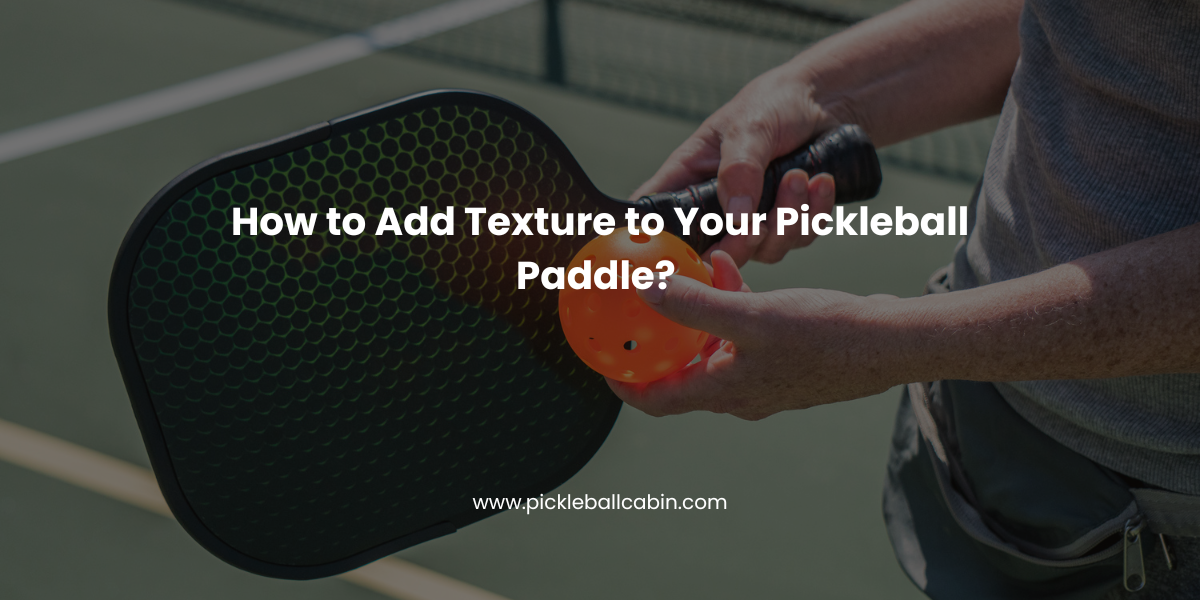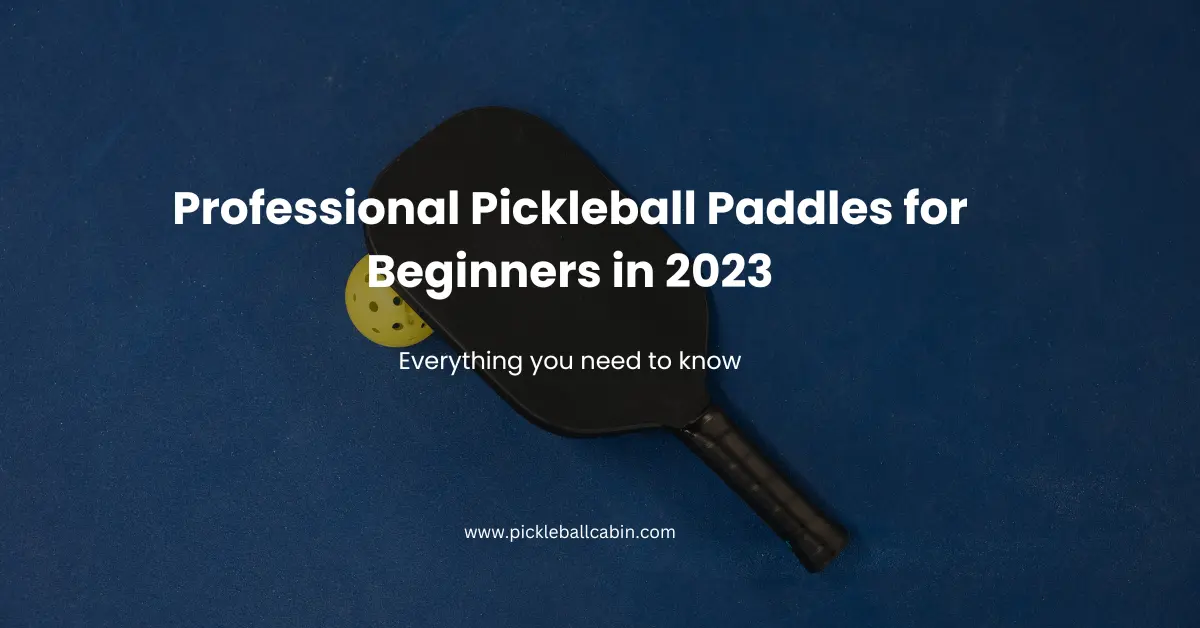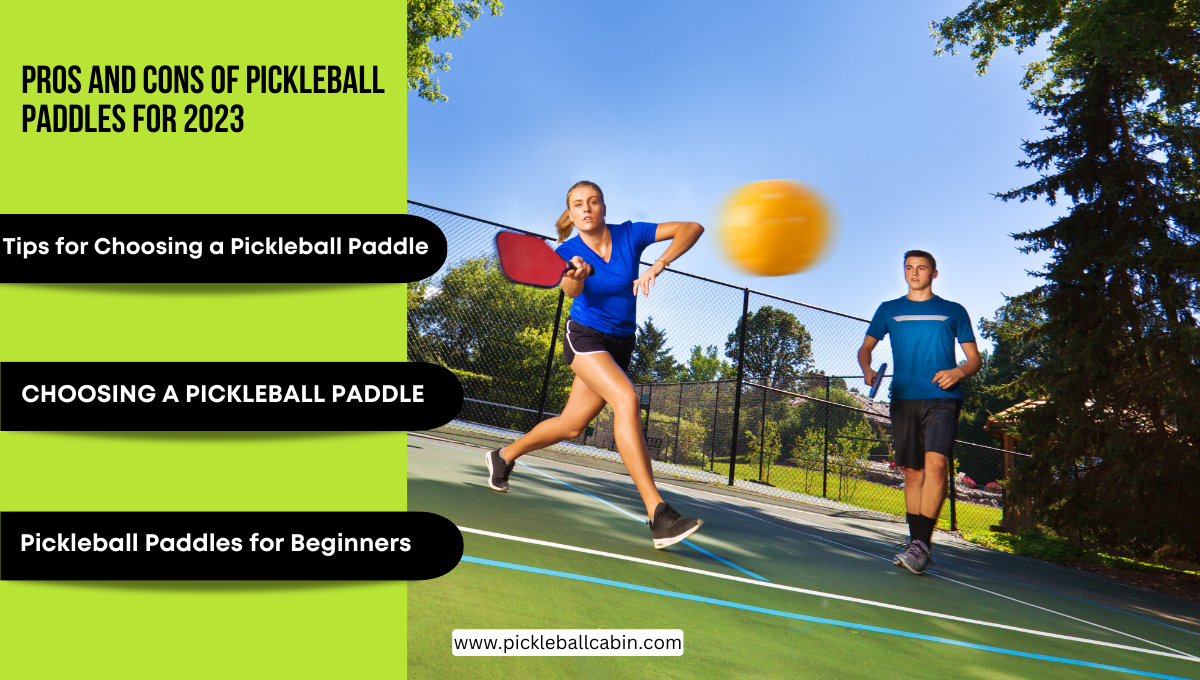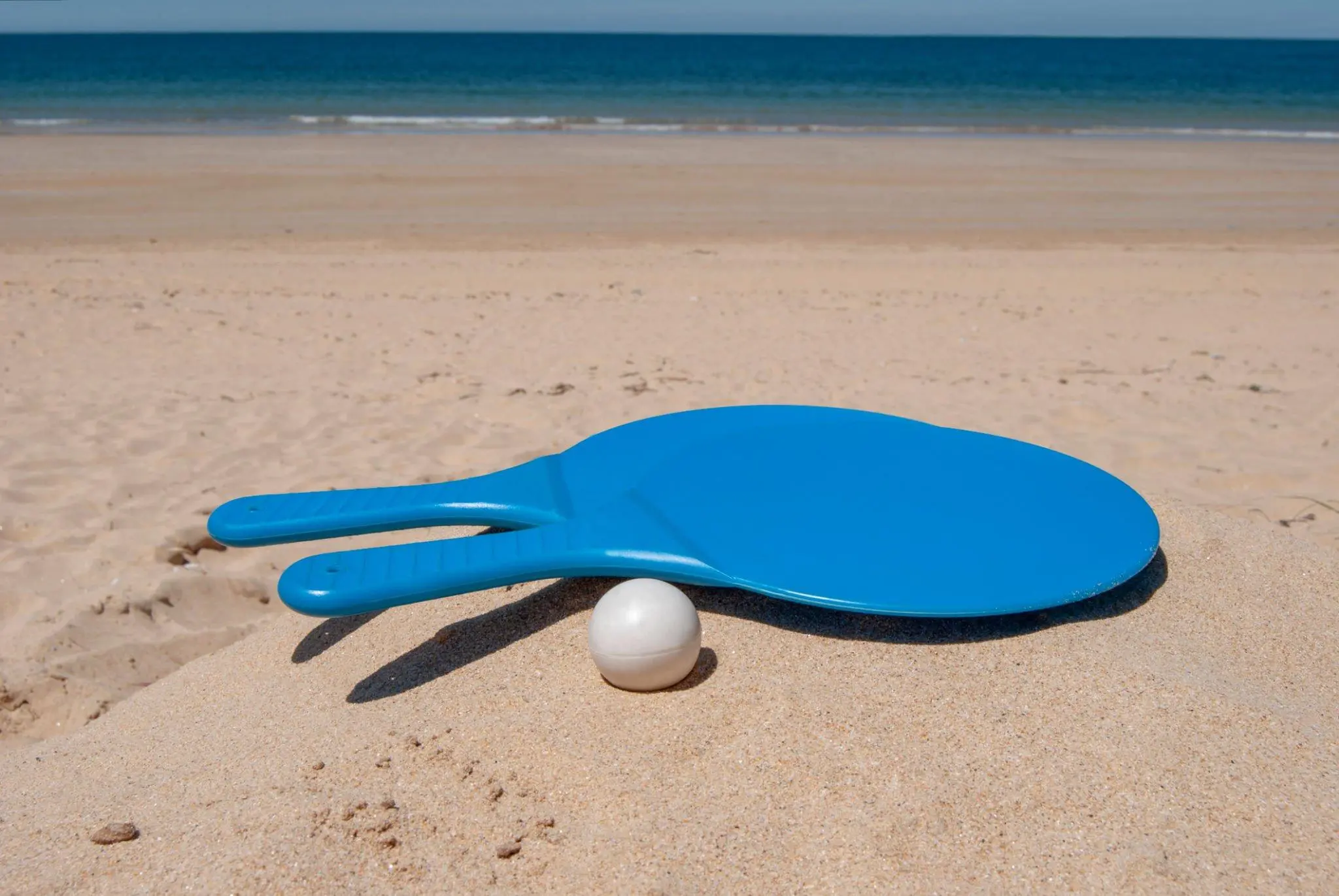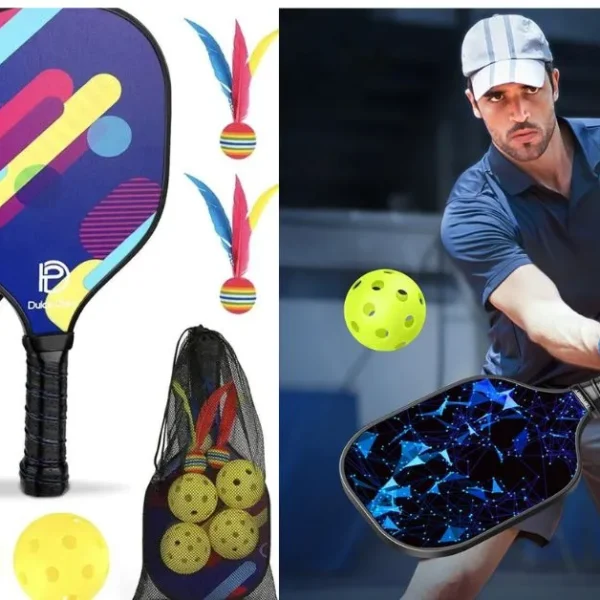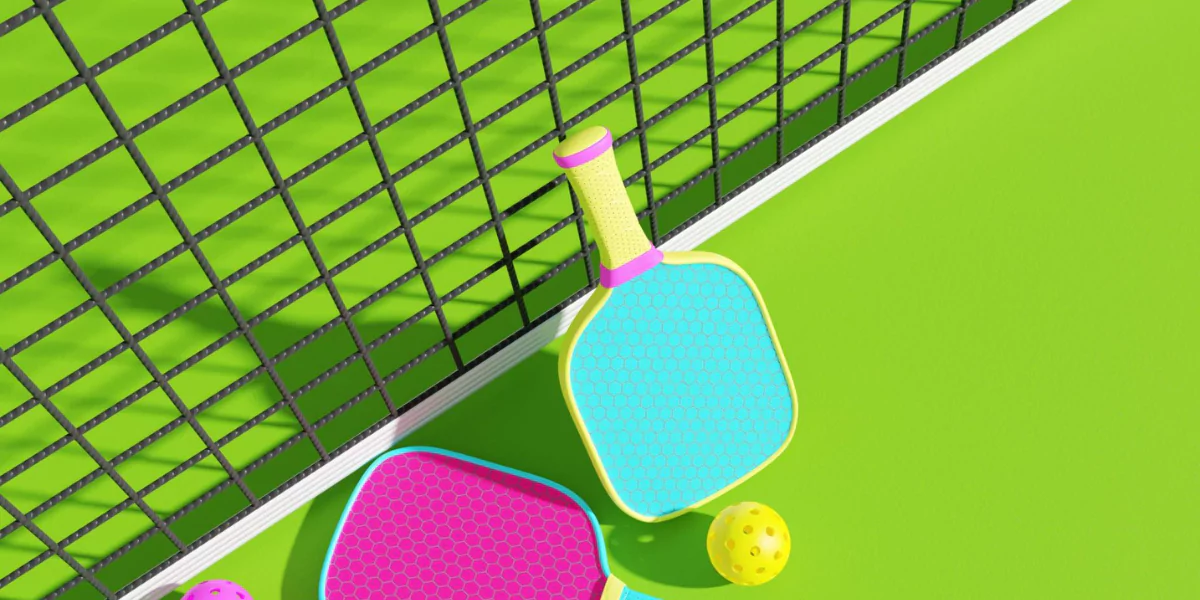One of the most important aspects of pickleball is the paddle. The paddle is the tool that players use to hit the ball and control its direction, speed, and spin. The paddle can have a significant impact on the performance and improve playing style, as well as the outcome of the game. Therefore, choosing the right paddle and taking proper care of it are essential for any pickleball enthusiast.
One of the features that can affect the paddle’s performance is the textured surfaces. The texture refers to the rough texture or smooth surface of the paddle, which can influence the grip, the feel, and the contact with the ball. The texture can also affect the appearance and the durability of the paddle. In this article, we will explore how to add texture to pickleball paddle, why adding texture is important, and what are the different methods and materials that can be used to achieve the desired texture.
Have you ever considered how adding texture to your paddle might boost your gaming significantly? Let’s look at some of the approaches and tactics that can help you improve your grip and take your playing to the next level.
Why Adding Texture is Important?
Adding texture to pickleball paddle can have several benefits for the advanced players, depending on the type and the amount of texture that they choose. Some of the advantages of adding texture are:
- Improved grip: A textured paddle can provide a stronger grip for the player, as the rough surface texture can prevent the paddle from slipping or sliding in the hand. A stronger grip can also reduce fatigue and strain on the wrist and the forearm, as the player does not need to squeeze the paddle too hard. A textured grip can also enhance the comfort and the feel of the paddle, as the player can adjust the pressure and the angle of the paddle according to their preference.
- Increased spin: A textured paddle can also increase the spin that the player can impart on the ball, as the rough surface can create more friction and contact with the ball. A higher spin can make the ball more unpredictable and difficult for the opponent to return, as the ball can change its direction, speed, and bounce. A higher spin can also improve the control shot Accuracy, as the player can manipulate the ball’s trajectory and placement more easily.
- Enhanced performance: A textured paddle can also enhance the overall performance of the player, as it can provide a balance between power and control. A textured paddle can allow the player to generate more power and speed in their shots, as the rough surface can transfer more energy and momentum to the ball. A textured paddle can also allow the player to have more control over their accurate shots, as the rough surface can provide more feedback and sensitivity to the ball. A textured paddle can also help the player to adapt to different playing conditions and playing style, as the texture can affect the response and the behavior of the ball.
- Compliance with tournament regulations: A textured paddle can also help the player to comply with the rules and the regulations of the game and the tournament, as some tournaments have paddle specifications for the texture and the grip. For example, the International Federation of Pickleball (IFP), the world governing body for the sport of pickleball, has a rule that states that the paddle surface texture must not contain holes, indentations, rough texturing, tape, or any objects or features that allow a player to impart additional or increased spin on the ball¹. A textured paddle that meets this rule can help the player to avoid any penalties or disqualifications from the tournament.
Different Methods to Add Texture
There are different methods and materials that can be used to add texture to pickleball paddle, depending on the preference and the skill level of the player, as well as the type of Textures and the quality of the paddle. Some of the most common and popular methods are:
Overgrip
An overgrip is a thin layer of material that can be wrapped around the handle of the paddle, to provide extra cushioning, comfort, and grip. An overgrip can also add some texture to the paddle, as some overgrips have a rough or a tacky surface that can improve the grip and the feel of the paddle. An overgrip can also protect the original grip of the paddle from wear and tear, and can be easily replaced when it gets dirty or worn out.
To apply an overgrip, the player needs to remove the old overgrip or the protective tape from the handle of the paddle, and then wrap the new overgrip around the handle, starting from the bottom and moving upwards, overlapping the edges slightly. The player can cut the excess overgrip and secure it with the adhesive tape that comes with the overgrip. The player can also apply some grip enhancers, such as rosin, chalk, or lotion, to increase the tackiness and the grip of the overgrip.
Some of the advantages of using an overgrip are:
- It is easy and inexpensive to apply and replace.
- It can provide a customized and comfortable grip for the player.
- It can add some texture and grip to the paddle, without affecting the weight or the balance of the paddle.
Some of the disadvantages of using an overgrip are:
- It can wear out quickly and lose its effectiveness.
- It can add some bulk and thickness to the handle, which can affect the feel and the fit of the paddle.
- It can only add texture to the handle, not to the playing surface of the paddle.
Grip Spray
A grip spray is a liquid product that can be sprayed on the handle or the surface of the paddle, to create a thin layer of texture and grip. A grip spray can also add some color and shine to the paddle, as some grip sprays have a glossy or a matte finish. A grip spray can also protect the paddle from moisture, dirt, and scratches, and can extend the lifespan of the paddle.
To apply a grip spray, the player needs to clean and dry the paddle thoroughly, and then cover the parts of the paddle that they do not want to spray, such as the edge guard, the logo, or the playing surface. The player can then shake the spray can well, and spray the product evenly on the handle or the surface of the paddle, holding the can about 10 to 15 cm away from the paddle. The player can apply multiple coats of the spray, letting each coat dry for about 10 to 15 minutes, until they achieve the desired texture and grip. The player can then remove the coverings and let the paddle dry completely before using it.
Some of the advantages of using a grip spray are:
- It can create a durable and consistent texture and grip on the paddle, that can last for a long time.
- It can add some aesthetic and protective value to the paddle, as it can enhance the color and the shine of the paddle, and prevent it from fading or cracking.
- It can add texture and grip to both the handle and the surface of the paddle, depending on the preference of the player.
Some of the disadvantages of using a grip spray are:
- It can be expensive and difficult to find, as not many stores or online platforms sell grip sprays for pickleball paddles.
- It can be messy and hazardous to apply, as the spray can contain chemicals and solvents that can irritate the skin, the eyes, or the respiratory system, and can damage the furniture or the floor if not applied carefully.
- It can alter the weight and the balance of the paddle, as the spray can add some extra weight and thickness to the paddle, which can affect the performance and the feel of the paddle.
Sandpaper
Sandpaper is a paper or a cloth that has an abrasive material, such as sand, glued to one side, that can be used to smooth or roughen a surface by rubbing it against it. Fine-grit sandpaper can also be used for texture of pickleball paddles, as it can create a rougher surface on the paddle, that can improve the grip and the paddle spin. Sandpaper can also remove any dirt, grease, or paint from the paddle, and prepare it for further texturing or painting.
To apply sandpaper, the player needs to choose the right type and grade of Fine-grit sandpaper, depending on the material and the condition of the paddle. The player can use a coarse sandpaper, such as 80 or 100 grit, to remove any old paint or texture from the paddle, and then use a finer sandpaper, such as 150 or 200 grit, to create a smoother and more even surface on the paddle. The player can then use a very fine sandpaper, such as 400 or 600 grit, to create a finer and more subtle texture on the paddle, that can enhance the grip and the paddle spin.
To use sandpaper, the player needs to wrap the sandpaper around a block of wood or a sponge, and then rub it gently and evenly on the paddle, following the direction of the grain or the pattern of the paddle. The player can apply more or less pressure, depending on the desired texture and effect. The player can also use a circular or a cross-hatch motion, to create a more random and natural texture on the paddle. The player can then wipe the paddle with a damp cloth or a paper towel, to remove any dust or debris from the paddle.
Some of the advantages of using sandpaper are:
- It is cheap and easy to find, as most hardware or craft stores sell sandpaper in different sizes and grades.
- It can create a customized and versatile texture on the paddle, as the player can choose the type and the grade of the sandpaper, and the amount and the direction of the rubbing, to achieve the desired texture and effect. Some of the disadvantages of using sandpaper are:
- It can damage or scratch the paddle, if not used carefully or correctly, as the abrasive material can remove too much material or create uneven or jagged edges on the paddle.
- It can affect the warranty or the legality of the paddle, if the sandpaper alters the original shape or the size of the paddle, or creates an excessive texture that violates the rules or the regulations of the game or the tournament.
- It can only add texture to the surface of the paddle, not to the handle, which can affect the balance and the feel of the paddle.
Rubber Grip
A rubber grip is a thick layer of rubber material that can be attached to the handle of the paddle, to provide extra cushioning, comfort, and grip. A rubber grip can also add some texture to the paddle, as some rubber grips have a ribbed or a patterned surface that can improve the grip and the feel of the paddle. A rubber grip can also protect the handle of the paddle from wear and tear, and can absorb some of the shock and vibration from the ball.
To apply a rubber grip, the player needs to remove the old grip or the overgrip from the handle of the paddle, and then slide the new rubber grip over the handle, making sure that it fits snugly and securely. The player can cut the excess rubber grip and secure it with the adhesive tape that comes with the rubber grip. The player can also apply some grip enhancers, such as rosin, chalk, or lotion, to increase the tackiness and the grip of the rubber grip.
Some of the advantages of using a rubber grip are:
- It can provide a soft and comfortable grip for the player, as the rubber material can conform to the shape and the size of the hand, and can reduce the pressure and the friction on the skin.
- It can add some texture and grip to the paddle, without affecting the weight or the balance of the paddle, as the rubber material is light and flexible.
- It can add some durability and protection to the paddle, as the rubber material can resist moisture, dirt, and abrasion, and can prevent the handle from cracking or breaking.
Some of the disadvantages of using a rubber grip are:
- It can be expensive and hard to find, as not many stores or online platforms sell rubber grips for pickleball paddles.
- It can be difficult and tricky to apply and remove, as the rubber material can be tight and sticky, and can require some force and patience to slide over the handle or to peel off the handle.
- It can only add texture to the handle, not to the playing surface of the paddle.
Grip Tape
A grip tape is a strip of adhesive material that can be stuck to the handle or the surface of the paddle, to provide extra grip and texture. Grip tape can also add some color and style to the paddle, as some grip tapes have different patterns, designs, or logos on them. Grip tape can also protect the paddle from moisture, dirt, and scratches, and can extend the lifespan of the paddle.
To apply grip tape, the player needs to clean and dry the paddle thoroughly, and then peel off the backing paper from the grip tape, and stick it to the handle or the surface of the paddle, smoothing out any air bubbles or wrinkles. The player can cut the excess grip tape and secure it with the adhesive tape that comes with the grip tape. The player can also apply some grip enhancers, such as rosin, chalk, or lotion, to increase the tackiness and the grip of the grip tape.
Some of the advantages of using a grip tape are:
- It is cheap and easy to find, as most sports or craft stores sell grip tapes in different sizes, colors, and styles.
- It can create a customized and personalized texture and grip on the paddle, as the player can choose the type and the design of the grip tape, and the amount and the location of the application, to achieve the desired texture and effect.
- It can add texture and grip to both the handle and the surface of the paddle, depending on the preference of the player.
Some of the disadvantages of using a grip tape are:
- It can wear out quickly and lose its effectiveness, as the adhesive material can peel off or fade over time, or get dirty or sticky from the sweat or the dirt.
- It can damage or leave residue on the paddle, if not removed carefully or correctly, as the adhesive material can tear or rip the paddle, or leave some glue or marks on the paddle.
- It can alter the weight and the balance of the paddle, as the grip tape can add some extra weight and thickness to the paddle, which can affect the performance and the feel of the paddle.
Paint Texture
A paint texture is a layer of paint that can be applied to the surface of the paddle, to create a textured and colored effect. A paint texture can also add some protection and durability to the paddle, as some paints have a rubberized or an anti-skid property, that can prevent the paddle from slipping or sliding on the court, or from cracking or chipping from the impact of the ball.
To apply a paint texture, the player needs to choose the right type and color of paint, depending on the material and the condition of the paddle. The player can use a rubberized paint, such as Plasti Dip or Flex Seal, to create a flexible and textured coating on the paddle, that can enhance the grip and the spin of the paddle. The player can also use an anti-skid paint, such as Rust-Oleum or Krylon, to create a rough and gritty coating on the paddle, that can improve the grip and the additional spin of the paddle.
To use a paint texture, the player needs to clean and dry the paddle thoroughly, and then cover the parts of the paddle that they do not want to paint, such as the edge guard, the logo, or the handle. The player can then shake the paint well, and spray the paint evenly on the surface of the paddle, holding the can about 10 to 15 cm away from the paddle. The player can apply multiple coats of paint, letting each coat dry for about 10 to 15 minutes, until they achieve the desired texture and color. The player can then remove the coverings and let the paddle dry completely before using it.
Some of the advantages of using a paint texture are:
- It can create a unique and attractive texture and color on the paddle, that can make the paddle stand out and look more appealing.
- It can create a durable and consistent texture and grip on the paddle, that can last for a long time, and can withstand the weather and the wear and tear of the game.
- It can add texture and grip to the surface of the paddle, without affecting the weight or the balance of the paddle, as the paint can be thin and light.
Some of the disadvantages of using a paint texture are:
- It can be expensive and hard to find, as not many stores or online platforms sell paint textures for pickleball paddles.
- It can be messy and hazardous to apply, as the paint can contain chemicals and solvents that can irritate the skin, the eyes, or the respiratory system, and can damage the furniture or the floor if not applied carefully.
- It can affect the warranty or the legality of the paddle, if the paint alters the original shape or the size of the paddle, or creates an excessive texture that violates the rules or the regulations of the game or the tournament.
More ways to add texture to a pickleball paddle :
| Method | Description |
|---|---|
| Grip tape | A thin, adhesive tape that is wrapped around the handle of the paddle to provide a better grip. |
| Short fibered felt | A type of felt that is glued to the paddle face to provide a rougher surface. |
| Texturized rubberized paint | A type of paint that is applied to the paddle face to provide a rougher surface. |
| Pickleball paddle sprayer | A device that sprays a textured coating onto the paddle face to provide a rougher surface. |
It’s important to note that there are strict rules regarding the textures of a pickleball paddle. According to the standards of the USA Pickleball Association, the surface roughness of a paddle is very precise and should not be reflective in any way. The paddle should also be made of rigid and non-compressible materials .
Proper Care and Maintenance
Adding texture to pickleball paddle can improve the performance and the appearance of your Pickleball Game, but it can also require some care and maintenance, to ensure that the texture and the grip remain effective and intact. Some of the care and maintenance tips are:
- Clean the paddle regularly, using a damp cloth or a paper towel, to remove any dirt, dust, or sweat from the paddle, and to prevent any bacteria or fungus from growing on the paddle.
- Dry the paddle thoroughly, using a dry cloth or a paper towel, or by letting it air dry, to prevent any moisture or humidity from damaging the paddle, or from affecting the texture or the grip of the paddle.
- Store the paddle properly, in a cool and dry place, away from direct sunlight or heat sources, to prevent any fading, cracking, or warping of the paddle, or any deterioration of the texture or the grip of the paddle.
Read More About Care an Maintenance here
Replace the texture or the grip when necessary, when it gets worn out, dirty, or ineffective, or when the player wants to change the texture or the grip of the paddle, to maintain the optimal performance and the appearance of the paddle.
Conclusion
Adding texture to pickleball paddle can be a great way to enhance the performance and the style of the paddle, as well as the enjoyment and the satisfaction of the game. There are different methods and materials that can be used to add texture to pickleball paddle, depending on the preference and the skill level of the player, as well as the type and the quality of the paddle. Each method and material has its own advantages and disadvantages, and can create different types of textures, effects and results on the paddle. The player can experiment and try different methods and materials, to find the best texture and grip for their paddle, and for their game. However, the player should also be aware of the care and maintenance that the texture and the grip require, and the rules and the regulations that the texture and the grip must follow, to ensure that the paddle remains in good condition and in compliance with the game. Adding texture to pickleball paddle can be a fun and rewarding experience, that can make the paddle more personalized and customized, and can make the game more exciting and challenging.
Which Pickleball Paddle Is Right for You? Read Ultimate Guide before Buying 2023
FAQ
- Why is adding texture important to a pickleball paddle?
Adding texture to a pickleball paddle is important because it enhances grip, especially during fast-paced precise shots and intense rallies. It allows for more control over the ball, reduces the chances of accidentally letting go of the paddle, and prevents hand slipping due to sweat or moisture. - What is an overgrip and how can it be added to a pickleball paddle?
An overgrip is a tacky and absorbent material that can be wrapped around the handle of a pickleball paddle to enhance texture. To add an overgrip, clean the handle of the paddle, unroll the overgrip and remove the adhesive backing, tightly wrap the overgrip around the handle, smooth out any wrinkles or bubbles, and secure the end with tape or the provided adhesive strip. - What is grip spray and how can it be applied to a pickleball paddle?
Grip spray is a product that creates a tacky and slightly rough surface texture on a pickleball paddle to improve grip. To apply grip spray, clean the handle of the paddle, shake the grip spray bottle well, spray a thin, even layer onto the surface, allow it to dry according to the manufacturer’s instructions, and repeat the process if desired. - How can sandpaper or grip tape be used to add texture to a pickleball paddle?
Sandpaper or grip tape can be used to create a rougher texture on a pickleball paddle. Clean the handle of the paddle, choose the desired grit level, rub the sandpaper or grip tape gently against the handle in a circular motion, covering the entire surface, and continue until the desired texture is achieved. Wipe off any dust or debris before use.
